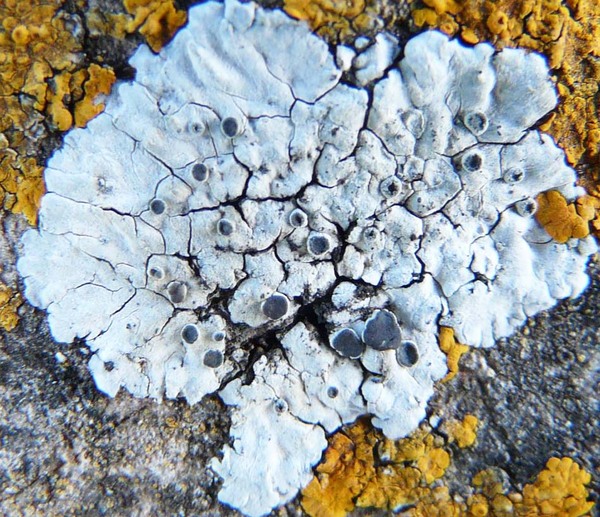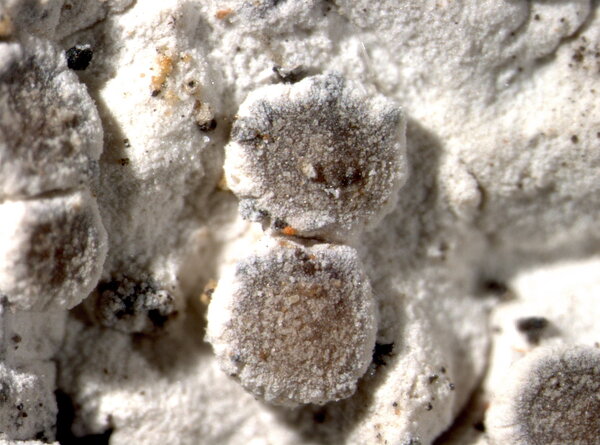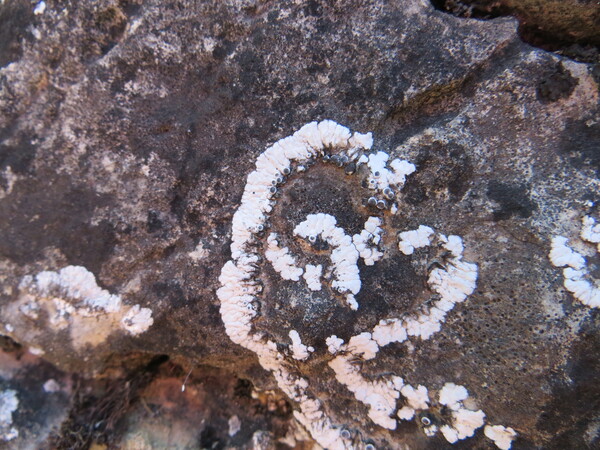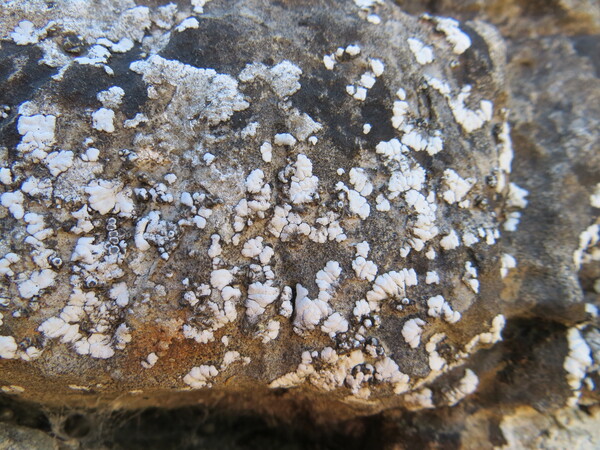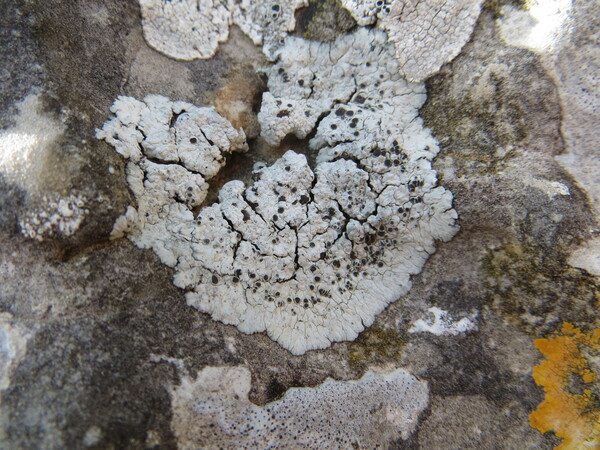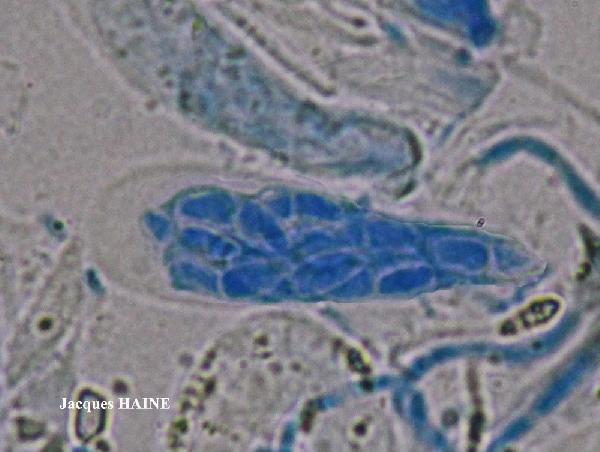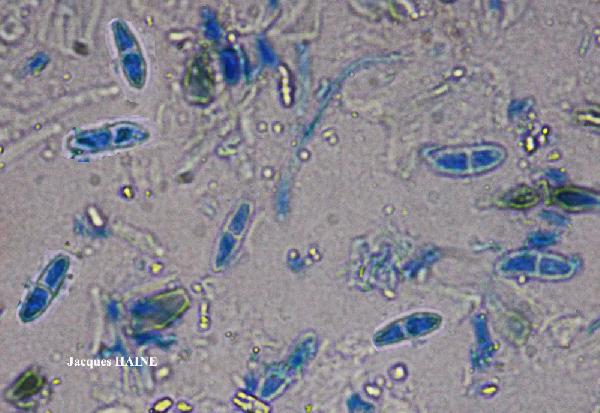Solenopsora candicans (Dicks.) J. Steiner
Österr. bot. Z., 65: 288, 1915. Basionym: Lichen candicans Dicks. - Fasc. Plant. Crypt. Brit., 3: 15, 1793.
Synonyms: Caloplaca candicans (Dicks.) Flagey; Diphratora candicans (Dicks.) Jatta; Lecania candicans (Dicks.) Stizenb.; Lecanora candicans (Dicks.) Schaer.; Placodium candicans (Dicks.) Duby; Placodium epigaeum (Ach.) Gray; Placolecania candicans (Dicks.) Zahlbr.; Ricasolia candicans (Dicks.) A. Massal.
Distribution: N - VG (Guttová & al. 2019, Senko & al. 2024), Frl (Tretiach & Molaro 2007, Senko & al. 2024), Ven (Guttová & al. 2014, Senko & al. 2024), TAA (Guttová & al. 2019, Fačkovcová & al. 2020), Lomb (Guttová & al. 2014, 2019, Senko & al. 2024), Piem, Emil (Fariselli & al. 2020), Lig (Guttová & al. 2014, 2019, Watson 2014, Giordani & al. 2016, Fačkovcová & al. 2020, Senko & al. 2024). C - Tosc (Pišút 1997, Benesperi 2006, Guttová & al. 2014, 2019, Fačkovcová & al. 2020, Darmostuk & al. 2022,Lich. Ital. Exs. 76: Isocrono & al. 2023, Senko & al. 2024), Marc (Nimis & Tretiach 1999, Guttová & al. 2019, Senko & al. 2024), Umb (Genovesi & Ravera 2001, Genovesi & al. 2002, Ravera & al. 2006), Laz (Bartoli & al. 1998, Nimis & Tretiach 2004, Guttová & al. 2019, Senko & al. 2024), Abr (Nimis & Tretiach 1999, Guttová & al. 2019, Fačkovcová & al. 2020, Senko & al. 2024), Mol (Garofalo & al. 1999, Nimis & Tretiach 1999, Caporale & al. 2008, Guttová & al. 2014, 2019, Fačkovcová & al. 2020, Darmostuk & al. 2022, Senko & al. 2024), Sar (Neuwirth 2018, Guttová & al. 2019, Senko & al. 2024). S - Camp (Garofalo & al. 1999, 2010, Aprile & al. 2003, 2003b, Nimis & Tretiach 2004, Guttová & al. 2019, Fačkovcová & al. 2020, Senko & al. 2024), Pugl (Garofalo & al. 1999, Nimis & Tretiach 1999, Guttová & al. 2019, Senko & al. 2024), Bas (Nimis & Tretiach 1999, Guttová & al. 2019, Fačkovcová & al. 2020, Darmostuk & al. 2022, Senko & al. 2024), Cal (Puntillo 1996, Guttová & al. 2019, Senko & al. 2024), Si (Nimis & al. 1994, Grillo 1998, Merlo 2004, 2004b, Grillo & Caniglia 2004, Brackel 2008b, Guttová & al. 2019, Fačkovcová & al. 2020, Darmostuk & al. 2022, Senko & al. 2024).
Description: Thallus crustose-placodioid, episubstratic, forming orbicular to irregular, strongly white-pruinose, 2-5 cm wide rosettes. Lobes mostly flattened, contiguous, radiating, 0.4-0.8(-1.4) mm wide, chalky white, sometimes glaucous-white at margins. Cortex colourless, with abundant crystals insoluble in K; medulla white, with a few crystals only. Apothecia frequent, lecanorine, subsessile, 0.8-2 mm across, with a flat, dark brown to black, usually slightly pruinose disc and a thin, white-pruinose, finally sometimes excluded thalline margin. Epithecium brownish; hymenium colourless, 50-70 µm high, K/I+ blue; paraphyses simple, coherent, not markedly capitate; hypothecium colourless, 110-140 µm high. Asci 8-spored, cylindrical-clavate, with a K/I+ blue outer coat and a K/I+ uniformly blue apical dome, approaching the Catillaria-type. Ascospores: 1-septate, hyaline, narrowly ellipsoid to almost acicular, sometimes slightly curved, (10-)12-17(-20) x 2.5-5 μm. Photobiont chlorococcoid. Spot tests: cortex K-, C-, KC-, P-, UV+ greenish grey; medulla P+ orange-red. Chemistry: medulla with pannarin and zeorin (both major). Note: a Mediterranean to mild-temperate species found on calcareous boulders, most often on horizontal faces; more heliophytic in Northern than in Southern Italy, where it often occurs in sheltered situations.
Growth form: Crustose placodiomorph
Substrata: rocks
Photobiont: green algae other than Trentepohlia
Reproductive strategy: mainly sexual
Commonnes-rarity: (info)
Alpine belt: absent
Subalpine belt: absent
Oromediterranean belt: absent
Montane belt: extremely rare
Submediterranean belt: rather rare
Padanian area: extremely rare
Humid submediterranean belt: rather common
Humid mediterranean belt: rather common
Dry mediterranean belt: rather rare
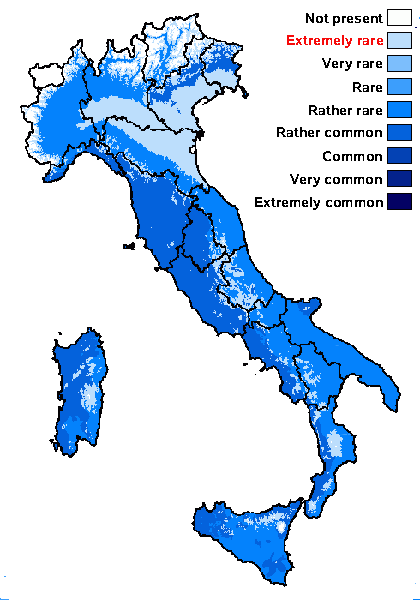
Predictive model
Herbarium samples


A. Moro; Owner: Department of Life Sciences, University of Trieste
Sicilia, TP, Isola di Marettimo
2008.04.03
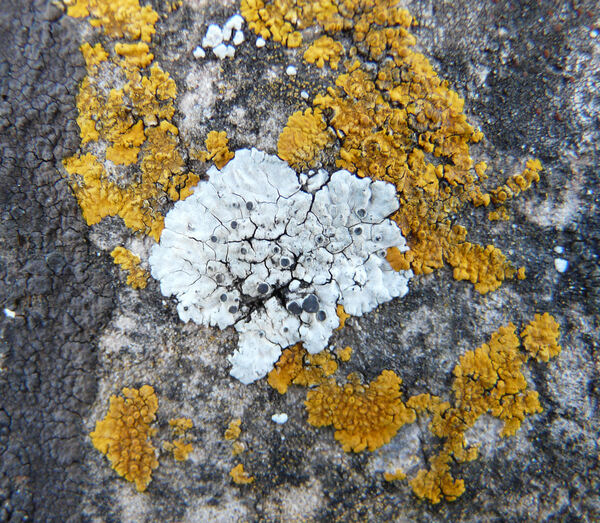

A. Moro; Owner: Department of Life Sciences, University of Trieste
Sicilia, TP, Isola di Marettimo
2008.04.03


A. Moro; Owner: Department of Life Sciences, University of Trieste
Sicilia, TP, Isola di Marettimo
2008.04.03


A. Moro; Owner: Department of Life Sciences, University of Trieste
Sicilia, TP, Erice, dintorni della città
2008.04.05
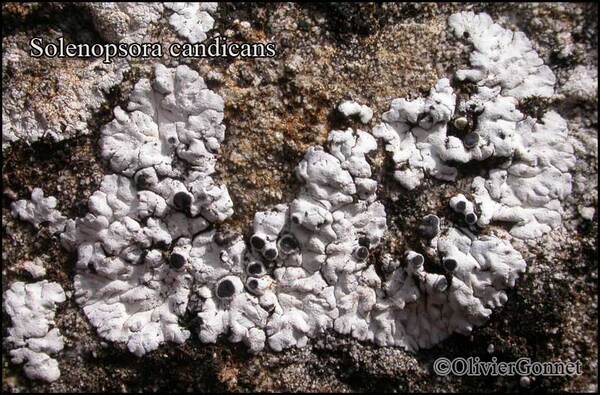
Courtesy Danièle et Olivier Gonnet - Source: https://www.afl-lichenologie.fr/Photos_AFL/Photos_AFL_S/Solenopsora_candicans.htm
France, session AFL 2005 en Lozère

Courtesy Danièle et Olivier Gonnet - Source: https://www.afl-lichenologie.fr/Photos_AFL/Photos_AFL_S/Solenopsora_candicans.htm
France, session AFL 2005 en Lozère
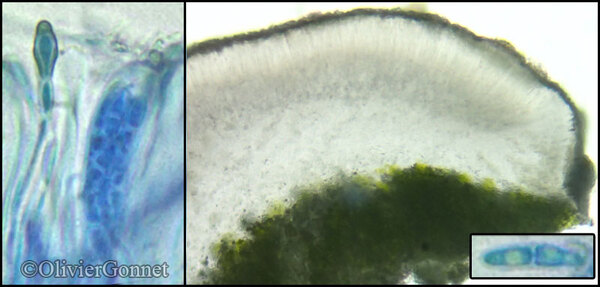
Courtesy Danièle et Olivier Gonnet - Source: https://www.afl-lichenologie.fr/Photos_AFL/Photos_AFL_S/Solenopsora_candicans.htm
France, session AFL 2015 dans le Lot, Autoire
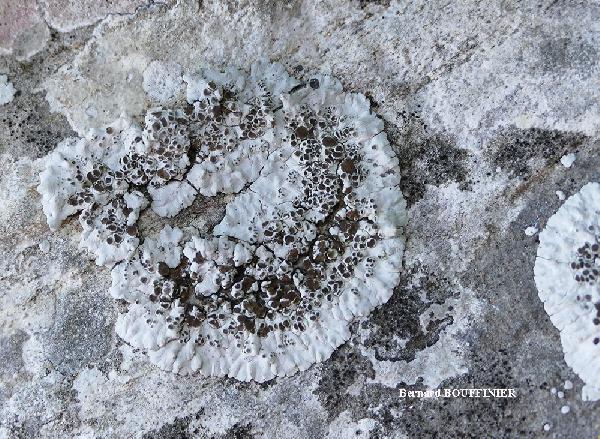
Bernard Bouffinier - Source: http://www.lichensmaritimes.org/index.php?task=fiche&lichen=932&lang=en
France, Corse, Barbaggio

Bernard Bouffinier - Source: http://www.lichensmaritimes.org/index.php?task=fiche&lichen=932&lang=en
France, Corse, Barbaggio
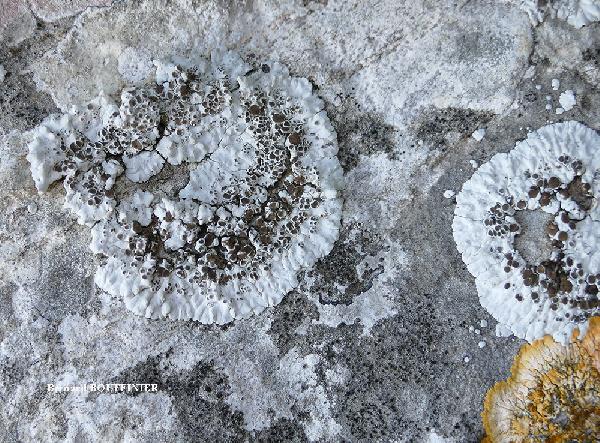
Bernard Bouffinier - Source: http://www.lichensmaritimes.org/index.php?task=fiche&lichen=932&lang=en
France, Corse, Barbaggio
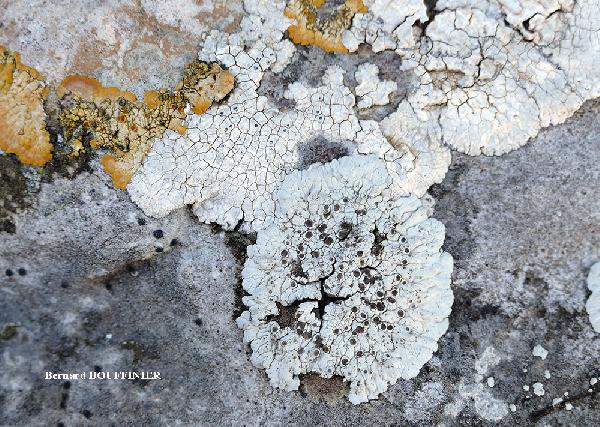
Bernard Bouffinier - Source: http://www.lichensmaritimes.org/index.php?task=fiche&lichen=932&lang=en
France, Corse, Barbaggio

Bernard Bouffinier - Source: http://www.lichensmaritimes.org/index.php?task=fiche&lichen=932&lang=en
France, Corse, Barbaggio

Bernard Bouffinier - Source: http://www.lichensmaritimes.org/index.php?task=fiche&lichen=932&lang=en
France, Corse, Barbaggio
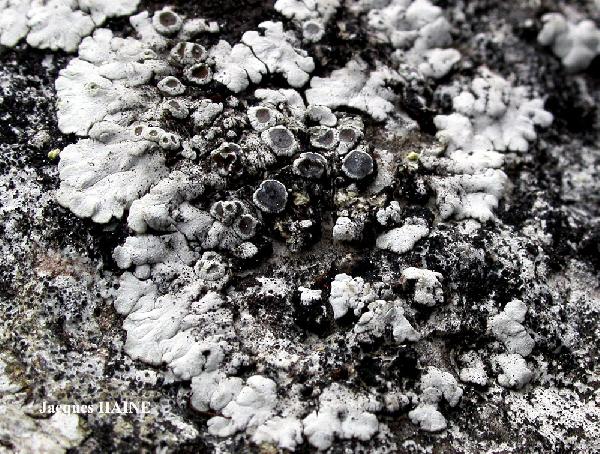
Jacques Haine - Source: http://www.lichensmaritimes.org/index.php?task=fiche&lichen=932&lang=en
Ardennes
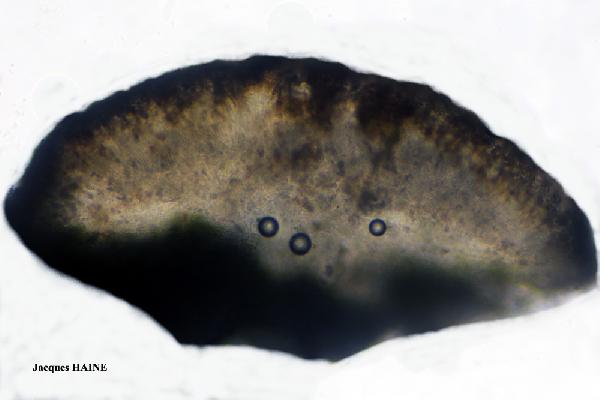
Jacques Haine - Source: http://www.lichensmaritimes.org/index.php?task=fiche&lichen=932&lang=en
Ardennes
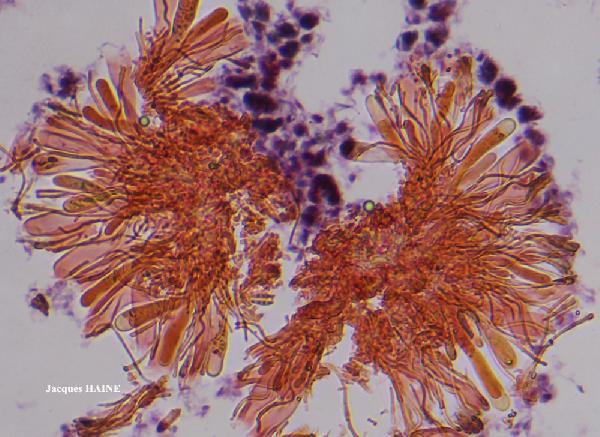
Jacques Haine - Source: http://www.lichensmaritimes.org/index.php?task=fiche&lichen=932&lang=en
Ardennes
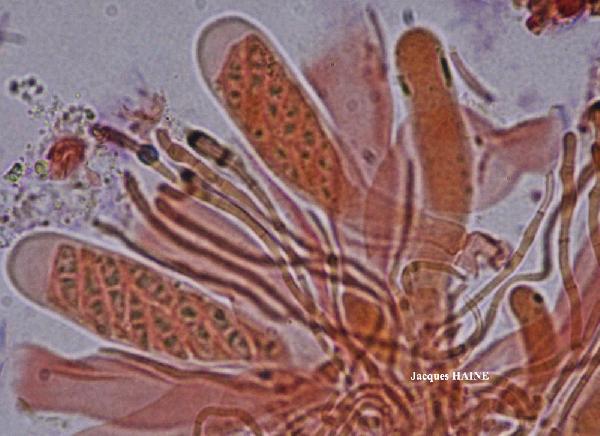
Jacques Haine - Source: http://www.lichensmaritimes.org/index.php?task=fiche&lichen=932&lang=en
Ardennes
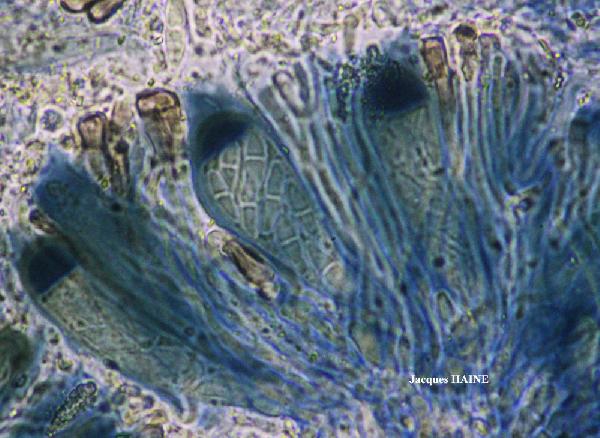
Jacques Haine - Source: http://www.lichensmaritimes.org/index.php?task=fiche&lichen=932&lang=en
Ardennes
Growth form: Crustose placodiomorph
Substrata: rocks
Photobiont: green algae other than Trentepohlia
Reproductive strategy: mainly sexual
Commonnes-rarity: (info)
Alpine belt: absent
Subalpine belt: absent
Oromediterranean belt: absent
Montane belt: extremely rare
Submediterranean belt: rather rare
Padanian area: extremely rare
Humid submediterranean belt: rather common
Humid mediterranean belt: rather common
Dry mediterranean belt: rather rare

Predictive model
| Herbarium samples |


A. Moro; Owner: Department of Life Sciences, University of Trieste
Sicilia, TP, Isola di Marettimo
2008.04.03


A. Moro; Owner: Department of Life Sciences, University of Trieste
Sicilia, TP, Isola di Marettimo
2008.04.03


A. Moro; Owner: Department of Life Sciences, University of Trieste
Sicilia, TP, Isola di Marettimo
2008.04.03


A. Moro; Owner: Department of Life Sciences, University of Trieste
Sicilia, TP, Erice, dintorni della città
2008.04.05

Courtesy Danièle et Olivier Gonnet - Source: https://www.afl-lichenologie.fr/Photos_AFL/Photos_AFL_S/Solenopsora_candicans.htm
France, session AFL 2005 en Lozère

Courtesy Danièle et Olivier Gonnet - Source: https://www.afl-lichenologie.fr/Photos_AFL/Photos_AFL_S/Solenopsora_candicans.htm
France, session AFL 2005 en Lozère

Courtesy Danièle et Olivier Gonnet - Source: https://www.afl-lichenologie.fr/Photos_AFL/Photos_AFL_S/Solenopsora_candicans.htm
France, session AFL 2015 dans le Lot, Autoire

Bernard Bouffinier - Source: http://www.lichensmaritimes.org/index.php?task=fiche&lichen=932&lang=en
France, Corse, Barbaggio

Bernard Bouffinier - Source: http://www.lichensmaritimes.org/index.php?task=fiche&lichen=932&lang=en
France, Corse, Barbaggio

Bernard Bouffinier - Source: http://www.lichensmaritimes.org/index.php?task=fiche&lichen=932&lang=en
France, Corse, Barbaggio

Bernard Bouffinier - Source: http://www.lichensmaritimes.org/index.php?task=fiche&lichen=932&lang=en
France, Corse, Barbaggio

Bernard Bouffinier - Source: http://www.lichensmaritimes.org/index.php?task=fiche&lichen=932&lang=en
France, Corse, Barbaggio

Bernard Bouffinier - Source: http://www.lichensmaritimes.org/index.php?task=fiche&lichen=932&lang=en
France, Corse, Barbaggio

Jacques Haine - Source: http://www.lichensmaritimes.org/index.php?task=fiche&lichen=932&lang=en
Ardennes

Jacques Haine - Source: http://www.lichensmaritimes.org/index.php?task=fiche&lichen=932&lang=en
Ardennes

Jacques Haine - Source: http://www.lichensmaritimes.org/index.php?task=fiche&lichen=932&lang=en
Ardennes

Jacques Haine - Source: http://www.lichensmaritimes.org/index.php?task=fiche&lichen=932&lang=en
Ardennes

 Index Fungorum
Index Fungorum
 GBIF
GBIF
